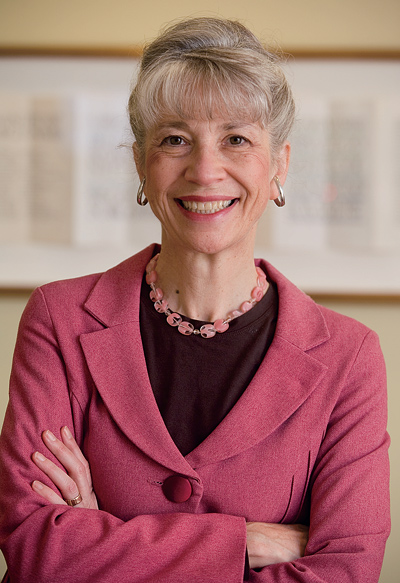Bates Matters

What should students learn in the course of an undergraduate education? Over the last three years, the Bates faculty has revisited this perennially intriguing question in search of an answer that makes sense in and of the world today.
The liberal arts curriculum as we know it has deep roots and draws ongoing nourishment from old ideas, beginning in classical antiquity and stretching on through medieval England into 19th-century Europe and America. At Bates, responsibility for carrying traditional ideas forward and developing new curricular structures was vested in the faculty 150 years ago, and in the College’s early days this appears to have been a more straightforward task. In the 1880s, the Bates catalog needed only two pages to list the curriculum, since all students took the same courses.
Over time, undergraduate course offerings here and elsewhere expanded to provide for more electives and emerging disciplines, from sociology in 1928 to neuroscience in 1997. Interdisciplinary work flourished, and faculty looked beyond Western ideas to promote awareness of a wider world. By the late 20th century, the list of Bates courses required more than 300 pages in our catalog, and curricular requirements provided depth, breadth, and considerable free choice. A student’s major, freely chosen on the basis of one’s own talent, interest, and/or future career options, provided the depth. Our set of distribution requirements, allowing further choice within the humanities, social sciences, and natural sciences, assured some breadth.
The faculty’s recent rethinking of the curriculum began with sustained and wide-ranging inquiry into the goals of a Bates education. Thorough discussion was facilitated by the persistent hard work of a core group of faculty, assisted by the Office of the Dean of the Faculty. The effort culminated in the new general education model approved by the faculty in April, the mechanics of which are described in this issue.
The new model leaves the notion of a required major untouched — and thus still open to the changing goals and strategies of each area of study. But in reconsidering the curricular structure of a Bates education outside the major, the model moves away from traditional distribution requirements toward a three-part, goal-oriented approach.
The first two goals intend to draw fresh attention to writing correctly and persuasively and to understanding something about scientific methods and quantitative analysis. The third, more innovative, goal seeks to offer all undergraduates a comparative appreciation of how different disciplines function, as well as some understanding of how we solve problems by looking at them from more than one disciplinary perspective.
To meet this third goal, the faculty has created what we call the general education concentration. Beginning with the Class of 2011, students who seek a Bates degree will pursue two general education concentrations of four courses each, chosen from a faculty-designed menu. Taken outside the student’s major, concentrations may consist of a coherent set of courses within a single subject or discipline, or they may integrate courses from multiple disciplines focusing on a single topic. For example, four courses from psychology, physics, music, and biology could constitute a concentration called “Sound, Hearing, and Music.”
General education concentrations may also include non-course-based academic work, such as significant community service or research or musical or theatrical performance, although non-course work will not count toward the 32 academic credits required for graduation.
Faculty members will work over the next year to define several new concentrations. Each concentration must have enough courses to be reasonably accessible to students. They must not be hampered by numerous prerequisites, but students will work progressively from the beginning to upper-level courses. Some concentrations may have a common experience, such as a gateway or core course, a capstone experience, or common presentations or symposia.
General education concentrations give some formal recognition to the interdisciplinary work that faculty and students are already doing, and they also carve out the space for new collaboration and integration. But they do so without creating permanent structures, like departments. General education concentrations are not intended to last forever; they will be stable enough to endure over a reasonable period of time, but they will also facilitate experimentation, and thus they will support our ability to respond creatively and flexibly to changes in both faculty training and student interest.
The process of curricular revisioning, never easy, has been exciting and productive for Bates faculty. The dialogue itself has allowed us to do what we want all our students to do: to talk patiently across different ways of seeing and knowing in order to reach a deeper understanding of how we join together to teach and learn.